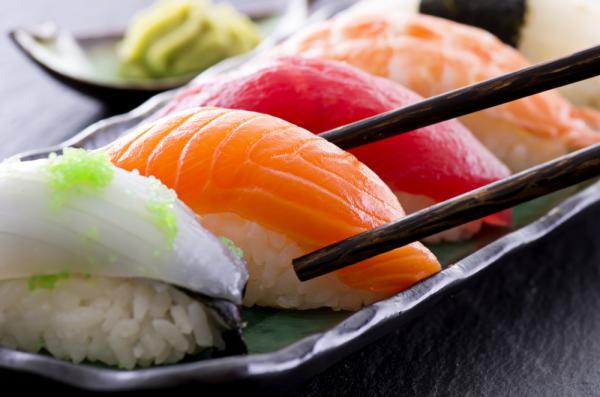
While out for sushi recently, I realized that I could not really tell which fish was which - not by sight and hardly even by taste.
It made me stop for a moment because my coworker recently told me that one tuna can sell for over a million dolllars. Obviously, I was skeptical. To my surprise, he was right. In 2013, at the Tsukiji fish market in Tokyo, Japan, the first tuna (traditionally the most expensive) sold for $1.76 million to a restaurateur. There are many reasons for this incredible price, including the shortening supply of tuna and the bidding wars that occur due to the esteem assigned the winner of the first fish.
The fish sold at the Tsukiji market is flown all over the world - for a price. We, as consumers, feel that price in our wallets. In fact, in NYC, one of the top sushi restaurants, Kurumazushi, just a few blocks away from our office, starts its dinner plates at $100 and the omikase at $300. That's per person.
But, when they bring out the plate of $300 sushi, how do you know that it is the expensive tuna that you are paying for? How many of us would really know if another fish of lesser quality had been substituted?
Well, it turns out that the fish may very well not be the expensive fish, regardless of its price tag.
Oceana is a group that has led the way with this issue, seafood fraud, and published a study in 2012 indicating that, indeed, much of the fish sold at restaurants, grocery stores and sushi venues was swapped out for a cheaper, lesser desirable species. The stores do this, primarily, as a way to save money - something that is not only unethical, but illegal. The study focused in on 81 venues in NYC - from which they collected 142 samples. Eighty nine samples were taken from grocery stores, 28 from restaurants and 25 from sushi venues.
The key findings of that report are:
- 58 percent of the 81 retail outlets sampled sold mislabeled fish (three in five).
- Small markets had significantly higher fraud (40 percent) than national chain grocery stores (12 percent).
- 100 percent of the 16 sushi bars tested sold mislabeled fish.
- 94 percent of the “white tuna” was not tuna at all, but escolar, a snake mackerel that has a high oil content that can create intense gastrointestinal distress for people who eat more than a small amount.
- Thirteen different types of fish were sold as “red snapper."
Not only do these findings constitute fraud in that consumers are paying for one fish and receiving a fish of lesser quality, but, it may also be dangerous. Oceana found that Tilefish was substituted for red snapper and halibut. Tilefish is one of the fish not recommended for consumption due to claims of high mercury content and resulting concern for pregnant women and children (the other fish on this list are Shark, Swordfish and King Mackerel.)
Oceana has gone on to show that this is not just a New York quirk, but, a nationwide scam. They have shown that it extends to lobster, shrimp and Maryland crab cakes.
How do they know that the fish has been switched? Here is where science becomes a key player. They use the polymerase chain reaction (PCR) based on the genomic sequence, one of the most widely used techniques in molecular biology. There are some genes that are common to all fish. These are called "housekeeping genes" and are usually involved in a fundamental process required to sustain life, such as making energy. Even though all fish have these genes, the DNA sequence varies from one fish species to another. By choosing one of these genes, performing PCR, and comparing the DNA sequences, it becomes clear if the sushi on your plate matches the DNA sequence of the bluefin tuna's or the cod.
So, what can we do to ensure that our fish is what we think it is?
Researchers are working on solutions. The Hajibabaei group out of Ontario, Canada published an article showing that a technology called "DNA mini-barcoding" - a streamlined version of the DNA sequencing process described above - may be able to make a difference in this fraudulent activity by quickly identifying fish species. With novel technologies, increased awareness, and more oversight, fish will be able to be monitored more closely, ensuring that the salmon on our plate is really salmon.



